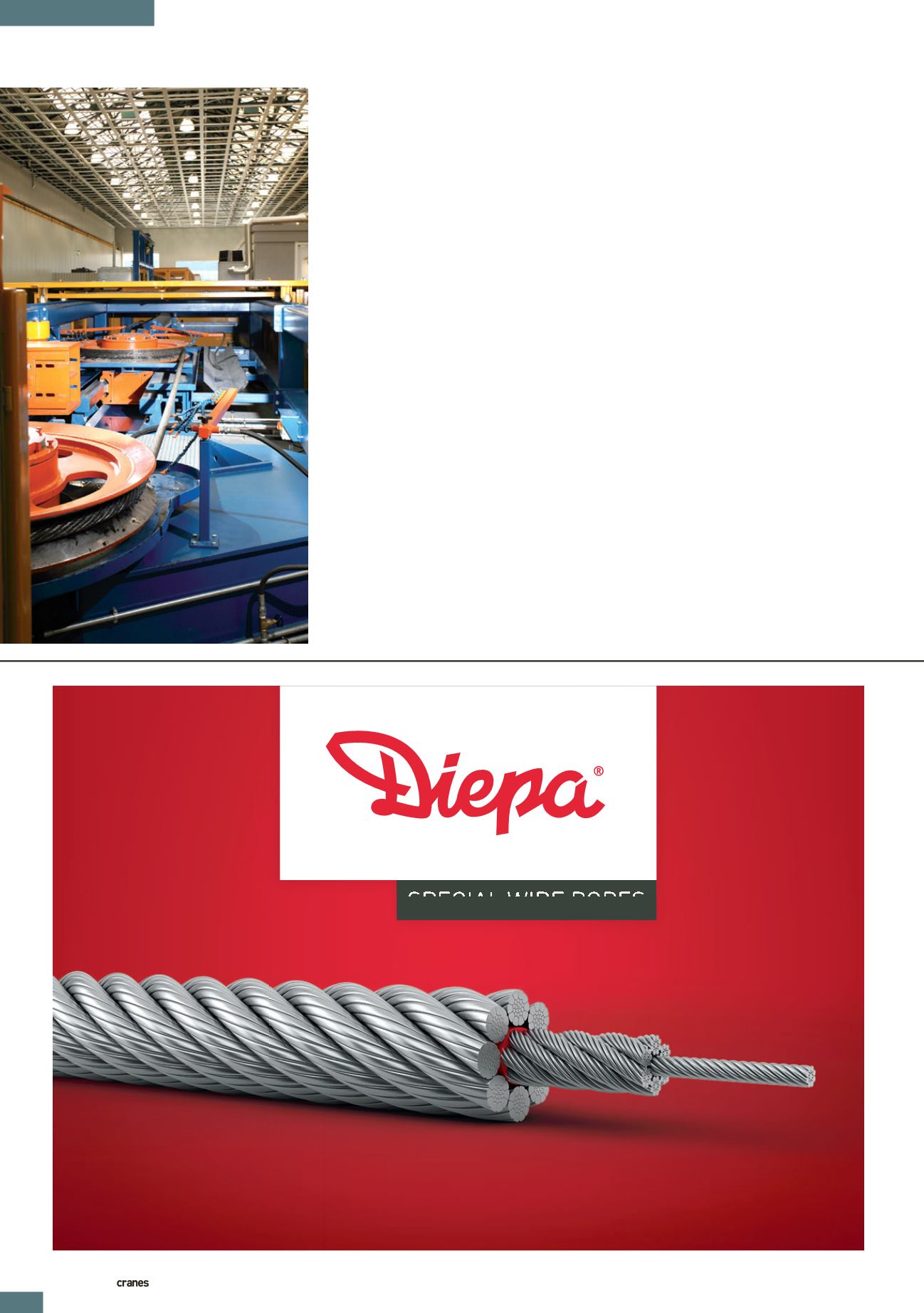
WIRE ROPE
INTERNATIONAL AND SPECIALIZED TRANSPORT
■
SEPTEMBER 2013
48
fatigue, all of which are key components to
understanding good performance of a rope
in a crane application,” Newton says.
DSM Dyneema also tests the fibres
which make up ropes. Facilities that the
company has invested in include bending
machines to test the performance of
ropes, creep measuring systems and test
equipment to mimic the effects that ropes
experience when against abrasive surfaces.
A turning point
Issues with rotation resistance, abrasion
and bend fatigue will continue to challenge
rope manufacturers. Trends, however, in
the rope industry could be about to take a
new direction, as DSM, a producer of fibre
for ropes, has experienced. Jorn Boesten
at DSM Dyneema, says, “We are seeing
that the industry is interested in replacing
wire rope with full synthetic solutions. In
fact, our customers are active in several
developments in which they provide full
synthetic alternatives for wire rope on
land-based cranes and also for offshore
deepwater cranes.”
It will be interesting to chart the
progress of development for synthetic
ropes for hoisting applications instead
of wire ropes, especially for
onshore applications.
■
equipment like the torsion-tension testing
machine, which tests up to 2,400 kN,”
Klink says. By the beginning of 2014 the
company will also have access to a new
bend fatigue machine.
Bridon also benefits from its own
testing equipment, which is housed
at the Bridon Technology Centre in
Doncaster, UK. The centre includes a
multi-layer spooling testing machine for
understanding the effects and damage
of multi-layer spooling, and a wire rope
tensile test machine, which is used to
determine the breaking load of a wire rope.
The machine can pull up to 200 tonnes on
a 42 mm sample of rope.
In addition, the centre has a lab for
analysing results. Machines in the lab
include a wire tensile test machine, which
measures the breaking load of the wires in
a rope, and a 3D Vickers microscope for
analysing wire rope fractures.
“Because of the Technology Centre
we can now concentrate on a range of
different types of properties that ropes
need, from construction testing for
breaking load and multi-layer spooling,
to torque turn characteristics and bend
The bend and reverse bend machine at the
Bridon Technology Centre
SPECIAL WIRE ROPES


